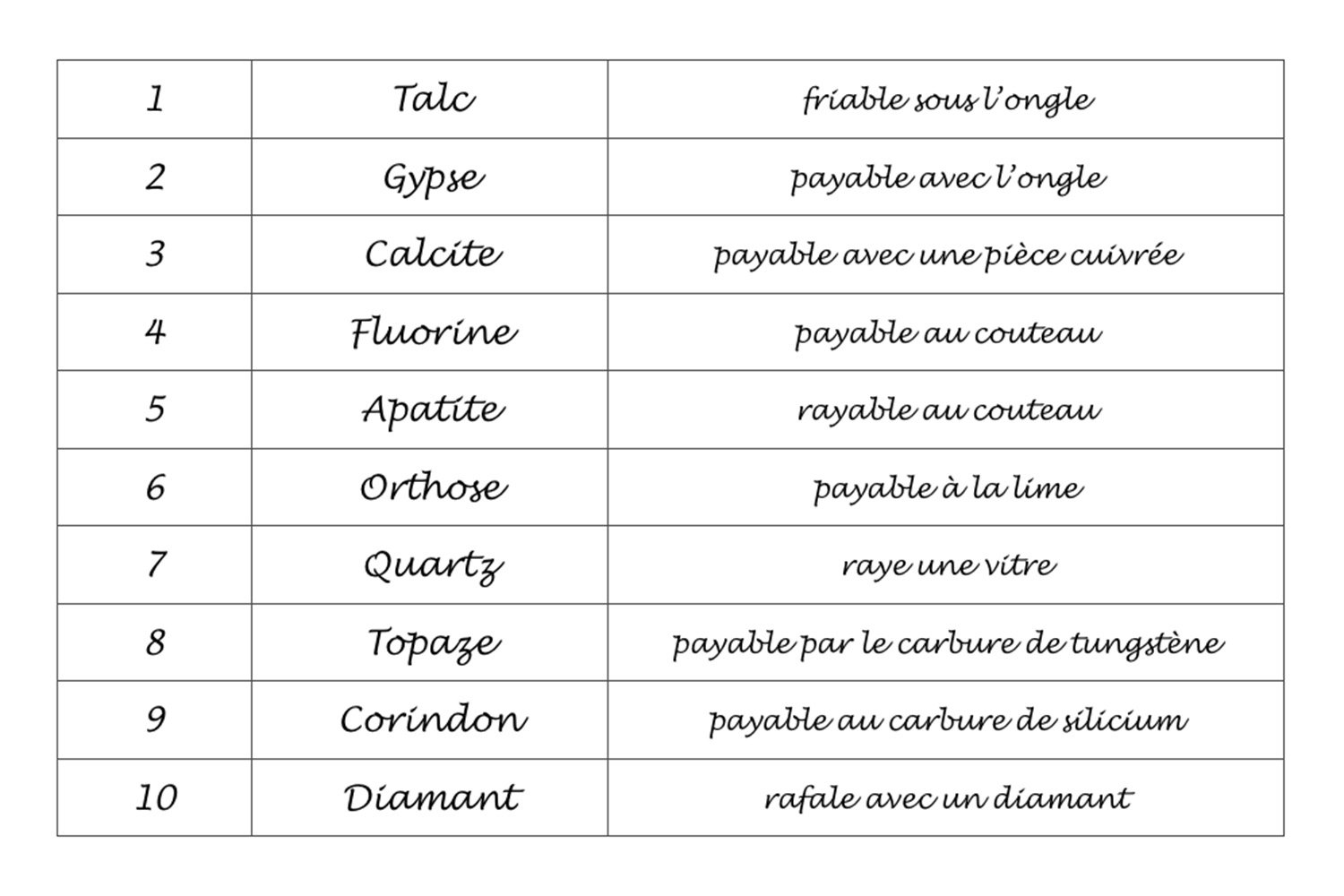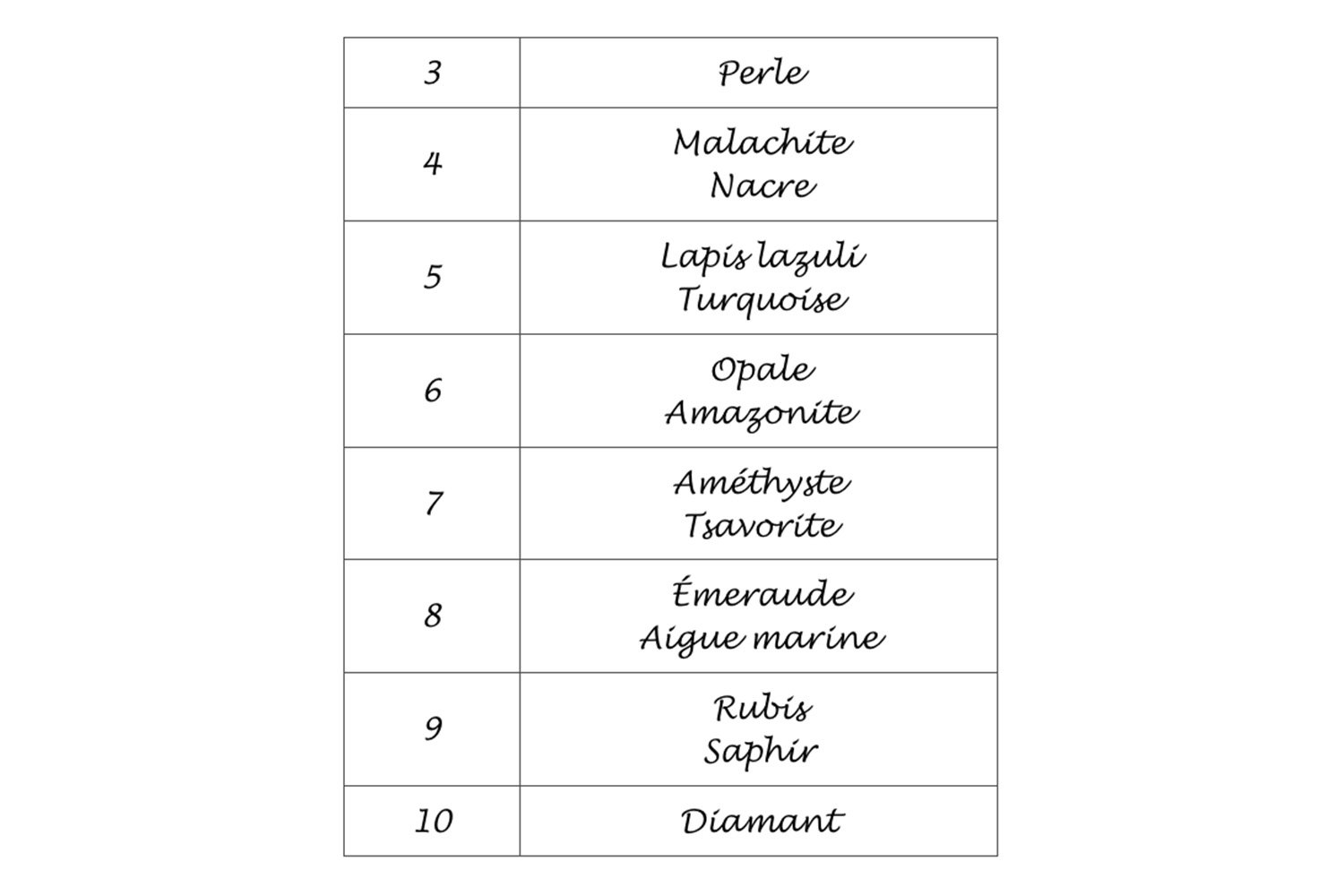Mohs scale
The Mohs scale is one of the scales used to measure the hardness and strength of minerals. It is widely used in the jewelry industry to determine the strength of fine and precious stones. The scale was invented in 1812 by Friedrich Mohs, a German mineralogist renowned for his research into minerals.
what is the mohs scale?
The Mohs scale gives an indication of the hardness and strength of minerals, and therefore of fine and precious stones. The scale ranges from 1 to 10 and is based on 10 common minerals of varying degrees of strength.
Level 1, the lowest level of hardness, is similar to talcum powder, which is crumbly under the fingernail, while level 10, diamond, is the most solid mineral in the world, and can only be scratched with another diamond.
Note that the difference in hardness between levels 1 and 9 is smaller than that between levels 9 and 10.
the mohs jewelry scale
In the jewelry industry, the hardness of a stone is of paramount importance in order to offer jewels that are resistant to scratches and shocks. It is important that gemstones can withstand everyday wear and tear.
Jewelry set with precious stones, such as sapphire or ruby, is more likely to stay with you for many years, as these are minerals that score high on the Mohs scale.
When it comes to stones, however, hardness and brittleness should not be confused. Hardness is the ability of minerals to resist friction, while a stone's fragility depends on many factors, such as cleavage or inclusions. A diamond can hardly be scratched, but it can contain inclusions and even break.
































